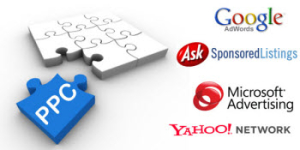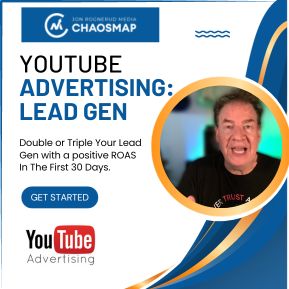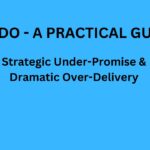What is PPC (Pay-Per-Click) Advertising?
If you found this post, it’s more than likely that you’ve heard, seen and used the most agile method of search engine marketing: PPC. Also called Pay-per-click advertising… it is a way to get instant search engine visibility to those who are searching for keyword phrases directly related to your business. Portions even appears above organic rankings, which makes it more visible for people interested to learn more, and even buy directly. That’s why PPC marketing & advertising is an essential part of an online marketing strategy for businesses, big or small.
How Does PPC Work?
The concept is very simple: you bid on search terms or keyword phrases you think are relevant to your business and only pay if and when the ad is clicked by users. PPC ads are placed strategically to generate a response and drive targeted buyers to your site.
These 9 strategies can be your guide to effectively incorporate PPC to your online advertising pursuits and drive more relevant, buyer traffic to your web pages.
Read and Be Updated
Just like anything on the Internet, PPC advertising moves constantly. Read up on how PPC marketing works, register for Google’s training courses and check for updates every now and then in your favorite blogs and PPC websites. The Google Adwords Help Center and Search Engine Journal are some resources you may want to check before starting your campaign.
Know Your Industry & Market
Beyond reading about PPC, it’s also essential to do some research specific to your industry. Review keywords that come to mind and compare then to what’s out there in terms of competition. Research is a key for you to choose effective keyword phrases, set the right budget, and structure a campaign that has the most chance of giving you great results. The Google Keyword Research Tools are a good place to start.
Test Ad Copy
Test different versions of your advertisements to know which would give you the best results. This will help you maximize the ROI of your campaigns. Set up tests that will rotate different ads for each of your keywords. Most PPC platform allows you to do this and displays what version of your ad will result with most clicks.
Always Include a Call-to-Action
There should always be some kind of call-to-action placed in your ad. If possible, use text, or even images (Display Networks) that can grab the attention of users. Then, use a simple one-liner that tells your visitors what they should do to know more about your brand, product or service. Possibly explain what they should expect once they click on your ad. Make sure to leverage approved symbols, numbers and punctuation, along with testing domain names and display URLs.
Use Location-Specific Keywords And Ads
PPC advertising allows you to target your audience based on their location and the scope of your business. If you are offering products or services that can be used globally, it’s good to design different ads that cater to different groups of people in terms of demographics (e.g., country, age, gender). If you are a small business owner, then use the specific city, state, or place you are located in so they could be more familiar with what you offer.
Use Negative Keywords
Negative or excluded keyword is an easy way to avoid unqualified traffic that drive up your overhead costs. Sometimes, your keyword can have a broad meaning that your ad shows up even though the query is not a match for your product. Using negative keywords will lower the chance of this occurrence and refine the positive keywords for web spiders. A simple example might be “cruise”. If you’re not selling Tom Cruise wares, make sure to exclude showing ads for “Tom Cruise”. A common negative keyword is “free”.
Explore Beyond Search Engines
Don’t limit your paid advertising campaign to search engines alone. Having your ads appear on websites, blogs, and emails can also give you a boost. Some high traffic websites and ad networks can publish your ads, which may increase your online visibility. Another way of reaching a wide number of potential customers is through sponsored ads on social networking sites and web properties related to your business.
Long-term Communications
Since your goal with PPC advertising is to get users to land on your page, why not get the most out of it by adding subscription and follow buttons to your landing pages? Once they click your ad, make sure you ask them for permission to receive future communications from you. You can do this by getting them to fill out a form, subscribe to a newsletter, or follow you on social media sites. This way, customer retention and loyalty can be promoted.
Impress With Your Landing Page
Last but not the least, you must have a killer landing page; both design-wise and content-wise. The purpose of your PPC advertising is to drive targeted traffic to a particular page. Make sure that what users saw in your ad is reflected on the landing page they’re about to see. If they don’t get what they want after clicking your ad, then the traffic will just go to waste. It’s advisable to have a clean look and direct messaging so they can easily see what they came for, and can decide quickly if they want to stay.
Top PPC Platforms
With the help of PPC platforms, you’ll surely have a spike of user traffic to your landing pages. Google revolutionized the Internet when it first created a search engine that ranked pages in a way that made sense. By 2005, the number of searches had grown dramatically as Google introduced Quality Score; a better ranking mechanism to determine which ads should appear before others (not simply based on keyword bidding price).
Because paid searches benefited both search engines and advertisers, the strategy just kept developing. Google’s Adwords program is the most widespread PPC platform in use today. Using it means your ads will appear next to organic Google search results and on the first page.
Facebook has also joined the PPC market with their “sponsored ads.” Other platforms include Bing! which provides advertising through their network including MSN and Hotmail, and Yahoo!
With the right knowledge and adequate practice of Pay-per-click advertising, you will surely reap more and more benefits along the way. In this day and age of technological innovations and online marketing pursuits of businesses worldwide, there’s just no excuse but to use Pay-per-click advertising and master it for the growth of your business. Plus, leveraging all the valuable marketing data in combination with SEO can prove a marketplace breakthrough for your business.
Resources:
https://metricmarketing.ca/pay-per-click-management-services
https://www.looksmart.com/3-successful-pay-per-click-strategies
https://www.futuresimple.com/blog/successful-pay-per-click-marketing-campaign/
https://www.quantumseolabs.com/blog/marketing/list-top-5-ppc-platforms-advertising/
photo credit: Stuck in Customs | cc
Jon Rognerud and Chaosmap work with Fortune 500 companies, associations and entrepreneurs to create digital traffic strategies that scale up members, customers, leads and sales with profitable returns. Mr. Rognerud wrote a best-selling book (Buy On Amazon), “The Ultimate Guide To Optimizing Your Website” (Entrepreneur). Connect directly here.







